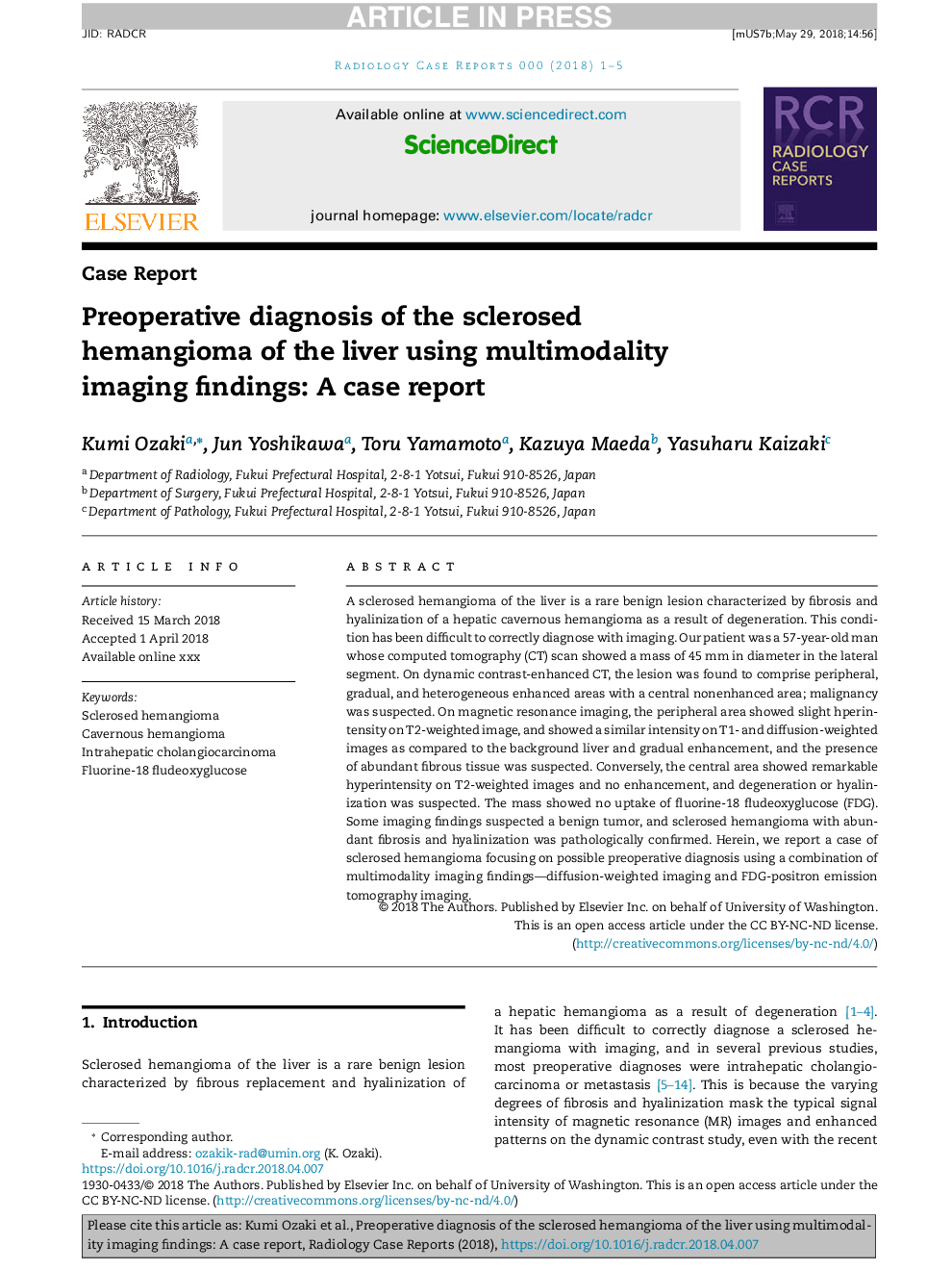| Article ID | Journal | Published Year | Pages | File Type |
|---|---|---|---|---|
| 10100305 | Radiology Case Reports | 2018 | 5 Pages |
Abstract
A sclerosed hemangioma of the liver is a rare benign lesion characterized by fibrosis and hyalinization of a hepatic cavernous hemangioma as a result of degeneration. This condition has been difficult to correctly diagnose with imaging. Our patient was a 57-year-old man whose computed tomography (CT) scan showed a mass of 45Â mm in diameter in the lateral segment. On dynamic contrast-enhanced CT, the lesion was found to comprise peripheral, gradual, and heterogeneous enhanced areas with a central nonenhanced area; malignancy was suspected. On magnetic resonance imaging, the peripheral area showed slight hperintensity on T2-weighted image, and showed a similar intensity on T1- and diffusion-weighted images as compared to the background liver and gradual enhancement, and the presence of abundant fibrous tissue was suspected. Conversely, the central area showed remarkable hyperintensity on T2-weighted images and no enhancement, and degeneration or hyalinization was suspected. The mass showed no uptake of fluorine-18 fludeoxyglucose (FDG). Some imaging findings suspected a benign tumor, and sclerosed hemangioma with abundant fibrosis and hyalinization was pathologically confirmed. Herein, we report a case of sclerosed hemangioma focusing on possible preoperative diagnosis using a combination of multimodality imaging findings-diffusion-weighted imaging and FDG-positron emission tomography imaging.
Related Topics
Health Sciences
Medicine and Dentistry
Radiology and Imaging
Authors
Kumi Ozaki, Jun Yoshikawa, Toru Yamamoto, Kazuya Maeda, Yasuharu Kaizaki,
